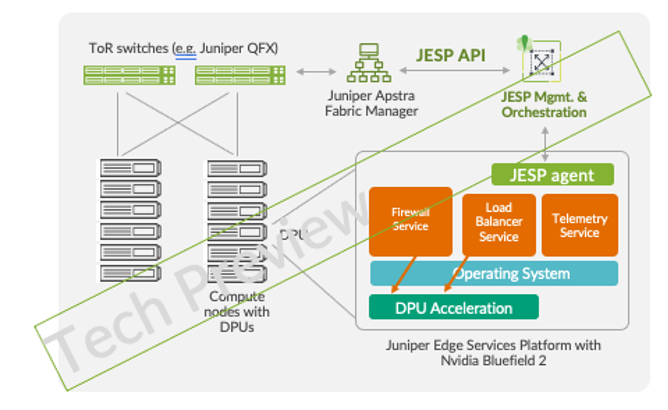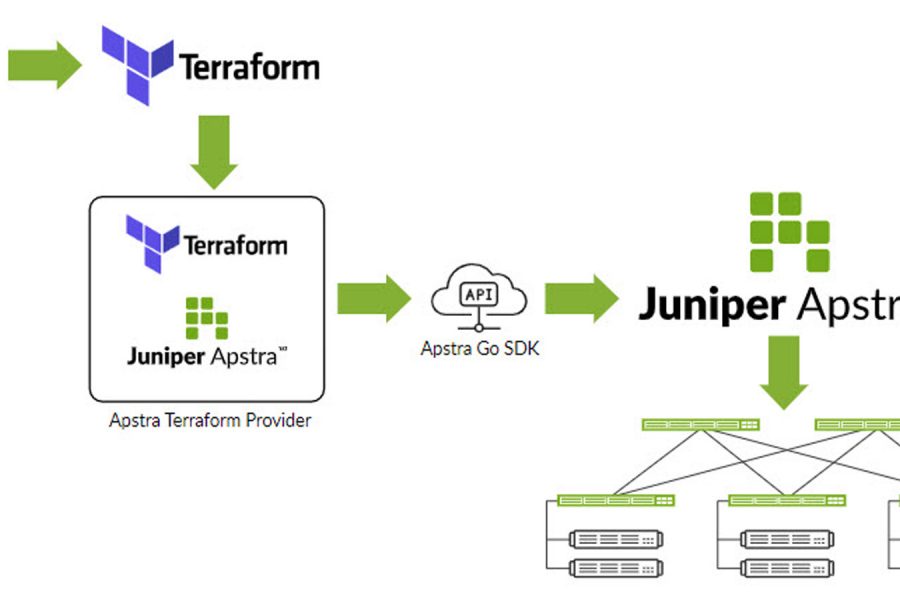It’s an exciting time to be in the networking space. Performance, security, scale and better operational experiences are more important than ever. At the same time, things are changing – particularly due to the increase in deployment of distributed software services and scale-out models for networking and security that have placed a stronger emphasis on simplicity and ease of operations.
Earlier this year, we discussed the value of extending the network all the way to the server through DPU (Data Processing Unit), such as the NVIDIA BlueField DPU powered SmartNICs, and how these devices can be used to provide L2-L7 networking and security services. These SmartNICs can enable a scale-out model so functions like distributed firewalls and virtual routing/tunneling along with load balancing can be deployed and managed across devices.
Gartner predicts that by 2023, one in three NICs shipped will be a SmartNIC. What this means is that inside the data center, you will have the capability of a high-performance networking appliance attached to every server. This means having a network and security edge appliance per server to run services at scale.
This is now achievable thanks to the robust SmartNIC ecosystem and its multiple vendors, each bringing their own level of differentiation to the table. For example, the NVIDIA Bluefield-2 DPU enables offload and acceleration of services through the NVIDIA DOCA software framework capabilities and libraries exposed to networking and security functions. Other vendors offer various differentiated capabilities for data center deployments, as well.
This diversity and richness of functionality brings multiple challenges. It starts with deployment, operation and management of SmartNICs and the applications running on them. Without a consistent and simple way to do this across multiple deployments and vendors, the operational experience of using SmartNICs can become patchy – within and across data centers. For deploying, operating and managing SmartNICs accelerated networking and security applications, a logically centralized SDN-like management model becomes critical. This approach can exploit the value of a distributed network and security services to overcome operational challenges. By operating across a multi-vendor environment, this management model can provide customers the flexibility to choose the best SmartNIC platform for their specific needs.
Sneak Peek: Juniper Edge Services Platform
At NVIDIA GTC 2021, we are providing a sneak preview of an internal Juniper project – Juniper Edge Services Platform (JESP), which enables the extension of the network all the way to the SmartNIC. In this technology preview, JESP offers life cycle management, observability and troubleshooting capabilities for SmartNIC-accelerated cloud-native applications and network services. It also provides enhanced monitoring, telemetry and visibility of application operations over networks. JESP can be applied within and across data centers – basically, wherever the edge of the network is terminated.

Examples of cloud-native networking and security functions that can be orchestrated and run on SmartNICs include containerized firewalls and a Layer 7 proxy, like Envoy. These can be accelerated using SmartNIC vendor APIs, such as the NVIDIA DOCA on the Bluefield-2 DPU-based SmartNICs.
JESP provides a northbound API that is usable by network fabric managers (e.g. the Juniper Apstra Fabric Manager) and data center automation software and tools. With the multi-vendor capability that Apstra provides for switch fabric management, Juniper delivers flexibility and operational consistency in the network. And with JESP and Apstra working together, we also avoid islands of network management when the network extends to the server.
Juniper’s true north of experience-first networking begins with performance and security, coupled with management and analytics, for a better end-user and operator experience at scale. Juniper is – and has been – a trusted partner to our customers and we look forward to partnering with them on future innovations like JESP.


